There’s a crispness to the air these days, and a high wind that tosses the crowns of the live oaks and pulls out handfuls of drying leaves. Which can only mean one thing: it’s time for a Standard rotation. Au revoir, War of the Spark! Let’s keep Nissa mirrors to the one place they belong: Hell. Get out of here, Ravnica! See you again in three years. In their place, we’re welcoming in Zendikar Rising, an apology set for Battle for Zendikar block, and a return to the dungeon-crawling vibes of original Zendikar.
Rise of the Eldrazi is one of my top five sets; Battle for Zendikar is one of my bottom five. Rise of the Eldrazi brought some of the splashiest cards ever printed and a deeply replayable Limited format; Battle brought fiddly placeholder mechanics and a stultifying Limited format.
Zendikar Rising seems to be right about in the middle of the pack—its biggest innovations are double-faced modal cards, which Wizards has already stated will be a recurring mechanic in the next year; and the “party” batch, which is a Historic-style taxonomy mechanic. Double-sided cards get a neat technical innovation, but we’ve seen double-sided cards many times. And we’ll see them again in a matter of months, which diminishes my excitement.
I’ve played a dozen or so drafts, and the format is intriguing thus far—U/B Rogues is a blast if the cards break right, and people seem to be undervaluing Territorial Scythecat, especially in conjunction with Roiling Regrowth. There are entirely too many 3/2 creatures for 2C, but that’s my only main critique of the set so far. In its synergy, it reminds me most of Lorwyn—you have to commit to an early pair, and snatch any of the key cards for that archetype, or you’ll wind up with an ugly split between Wizards and Rogues or Warriors and Clerics. Every bomb is beatable through tribal interactions, except for Felidar Retreat. Taborax, Hope’s Demise is also an uphill struggle, since he’s both bomb and synergy.
Meanwhile, Kicker is back, meaning my two favorite mechanics are now legal in Standard together. There’s no interaction between Kicker and Cycling, but they do offer situationally useful cards with the option for another mode. Between Cycling, Kicker, double-faced lands, and Mutate, this is going to be one of the more subtly complex Standard formats in years. Every card in your hand can be multiple cards, and it requires moment-to-moment reevaluations and high board literacy—or you can just jam a turn one Flourishing Fox.
In testing post-rotation Standard, I’ve been struggling with multicolored decks. Without the Ravnica Shocklands, our untapped multicolored lands are reduced, and I’ve stumbled on too many Temples and drawn too many double-Triome hands to feel great about the chances of some three-color decks. The Pathways, though, help some archetypes—Mardu now has eight Pathways and a Triome, and Temur Adventures basically has perfect mana at this point. I’m on Blue-Black Rogues, backed up by Clearwater Pathway and Murkwater Pathway. I miss the shocks dearly—I’ve had more Castle Locthwain and Castle Vantress come into play tapped in the last four days than in the four months prior.
My top five under-respected cards:
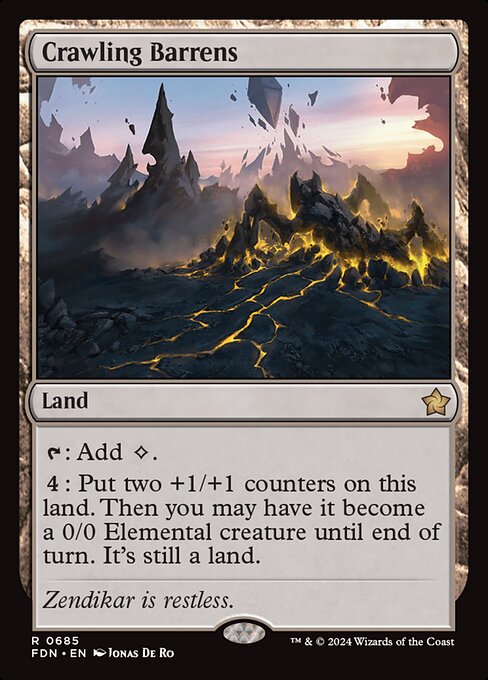
I’ve first picked Crawling Barrens three times in Arena drafts, because I suffer from severe analysis paralysis, and it’s overperformed each time. The ability to choose whether to animate it blanks opposing removal, and makes it an inevitable threat.
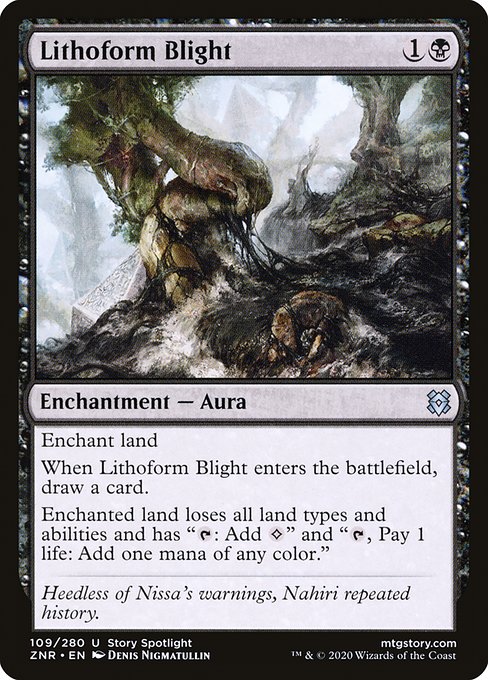
Speaking of complexity, here’s a truly nuanced card. Spreading Seas was simple: slap it on their mana-fixing land and crash in with Merfolk. Lithoform Blight, meanwhile, can fix your own mana for a price or shut down a Field of Ruin or creature land.
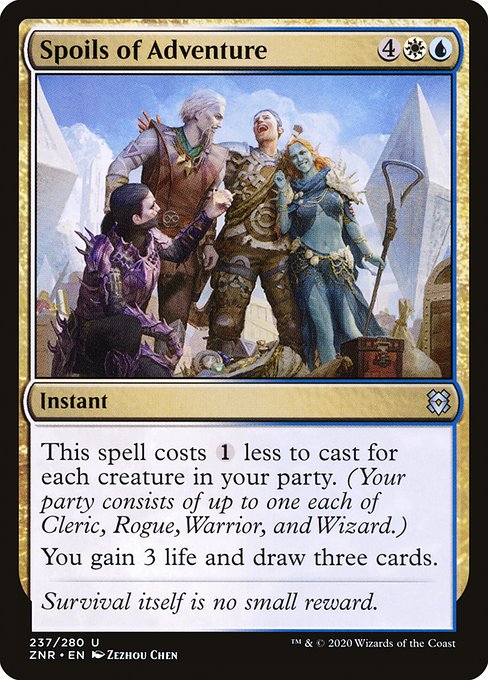
Unsettled Mariner may only count as one creature in your party, but it does count as any creature of your choice. Add an idle Snapcaster Mage and a Brazen Borrower, and you’re playing this for three mana. I’m not sure what the payoff for that is, but that cast of characters plus a Teferi or six is halfway to a deck.
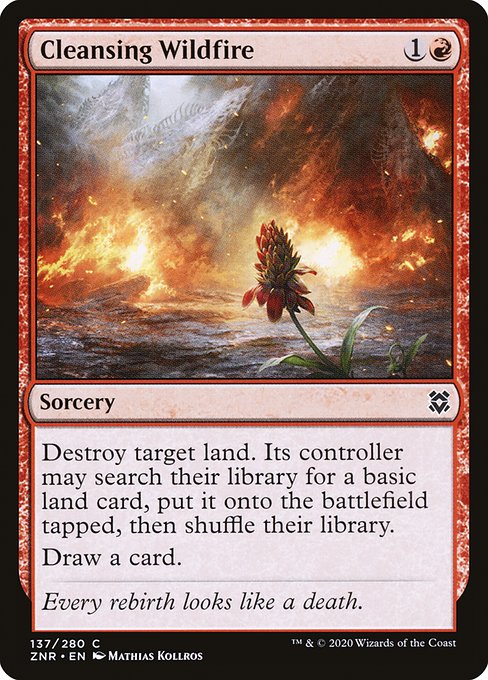
The combo of Cascading Cataracts and Nissa, Who Shakes the World does serious work in Historic. Now with Cleasing Wildfire, you can target your Cascading Cataracts to build your own cantripping Rampant Growth. Not entirely sure why we needed a cheaper Geomancer’s Gambit, but I’m currently building the Worst Modern Deck ever based on this strategy, so I’m not complaining.
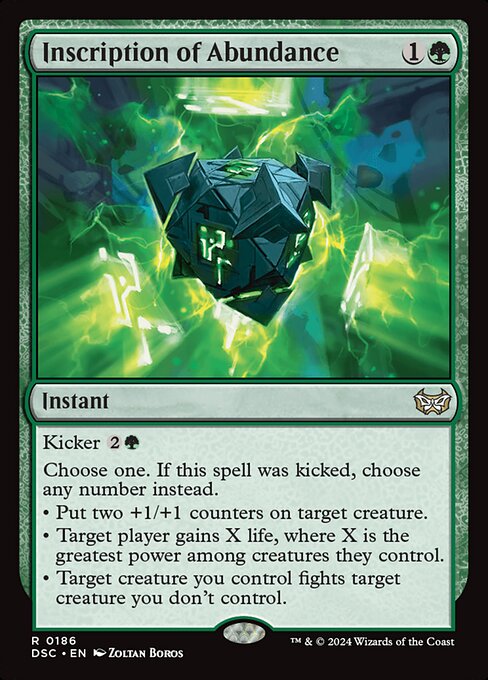
At two mana, Inscription of Abundance counters a burn spell (either by saving your creature or bolstering your life total in the face of a fatal few damage) or lets Uro or Kroxa smash a creature in response to the sacrifice trigger. At five mana, it does everything. Chevill, Bane of Monsters and Hooded Blightfang love this in Standard, and it makes Standard Jund tempting.
Cards improved by Z.R.:
Bonecrusher Giant: Obviously, you’re going to want a way to kill Lotus Cobra on turn two, and it doesn’t get much better than this.
Fabled Passage: A paltry fetchland is still a fetchland when you need to trigger Landfall at instant speed. In Uro’s world, that four-land threshold is trivial.
Feline Sovereign: Felidar Retreat is a serious threat, and a clear upgrade on Retreat to Emeria, which made some waves in its Standard environment. Feline Sovereign makes those cat tokens even more threatening. In the mirror match, this breaks parity.
Mythos of Snapdax: Mardu mana looks extremely solid, and Mythos is a great payoff for that mana, especially in conjunction with Doom Foretold. Snapdax Stax is not an archetype I expected, but it may be one worth exploring.
Shark Typhoon gets implicitly better with each set, especially in a set with ramp strategies. No surprises here, just like there are no surprises when you sit down against a Blue deck in Standard right now.
After the exceptionally powerful and ban-ravaged Standard we’ve just freed ourselves from, I’m looking forward to a more mellow environment. I say “looking forward to,” because as long as Uro is running roughshod over the format, I don’t expect it to be terribly relaxing. Still, at the very least, it’s unexplored territory, and it’s worth exploring together.
Zendikar Rising is interesting because there’s no true payoff for adventuring. There are no Gold tokens, no Treasure, no Legendary Equipment—indeed, the set’s equipment subtheme is built around adventuring tools, rather than treasures. Instead, the payoff comes once you’ve assembled an adventuring party—or as anyone who’s faced down multiple Malakir Blood-Priests can tell you, three-quarters of an adventuring party. It seems to be suggesting that the real priceless treasure is the Warrior, Rogue, Cleric, and Wizard we met along the way—or the tons of Clerics we sacrificed to our dark Demon god. Same difference, really.
A lifelong resident of the Carolinas and a graduate of the University of North Carolina, Rob has played Magic since he picked a Darkling Stalker up off the soccer field at summer camp. He works for nonprofits as an educational strategies developer and, in his off-hours, enjoys writing fiction, playing games, and exploring new beers.

